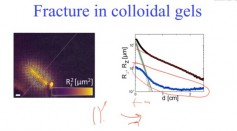materials science
‘Catalytic Condenser’ Demonstrates Alternative Materials Like Metals for Stronger Renewable Energy

'Goldilocks' Superconductors One Step Closer With New Cerium Superhydrides

International Study Develops Technique To Visualize Microscopic 3D Displacements, Suggests Potential Uses
Most Perfect Graphene: Single-Crystal Specimen Has No Wrinkles, Folds, Adlayers
Metamaterials Made Simpler With Kirigami for Modular, Reconfigurable 3D Structures
Amalgamation of Two Metals Form Nanocrystals Through an 'Intuitive' Technique

High-Density Glass From a New Type of Thin Film Liquid Could Create Stronger, Denser Materials

Towards Greener Energy Solutions: Inorganic Material With Lowest Thermal Conductivity Successfully Fabricated
First 'Defect Microscope' Can Monitor Subspace Line Defects in Macroscopic Materials
World's Tiniest Technology Thin Film That Is TWO Atoms Thick Used to Store Electric Information
The Janus Particle: How These Two-Faced ‘Nanoswimmers’ Could Improve Drug Delivery, Waste Recovery

LEGO Succeeds in Creating Recycled PET Plastic Bricks, But Will Take "Some Time" Before Hitting Shelves
Inkjet Printing of ‘Impossible Materials’ That Is Invisible to the Human Eye Now Possible With New Technology
Greener Approach: Visible Light Used to Decompose CO2 in New Strategy
Most Popular

AI Revolution in Medical Education: Transforming How Healthcare Professionals Learn

Optimizing Complex Catalog Systems with Graph Theory and Indexing

Practical Steps to Future-Proof Your Money to Create Financial Security

Out of Office, Not Out of Mind: Planning for Employee Holiday Absences





